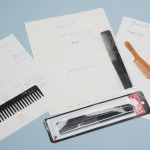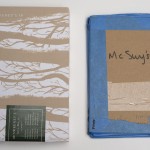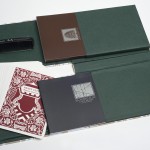The McSweeney’s archive, which the Ransom Center acquired in 2013, is now open for research. Founded in 1998 by Dave Eggers, McSweeney’s Quarterly Concern is considered one of the most influential literary journals and publishing houses of its time. McSweeney’s publishes books, Timothy McSweeney’s Quarterly Concern, The Believer magazine, the food journal Lucky Peach and the DVD-journal Wholphin. This is the first in a series of blog posts highlighting items from this dynamic and diverse collection.
It’s 1997. Dave Eggers is working at Esquire magazine. From his Brooklyn apartment at 394A Ninth Street, Eggers sends an email (a pretty new technology, by the way) to all his friends and writers he knows soliciting their unpublished work for a new literary quarterly. Eggers explains the publication will be called McSweeney’s, named after a man claiming to be a relative who wrote “long, tortured, and often incomprehensible letters” to the Eggers family. The email, which was forwarded extensively to other friends and writers, notes: “There will be an emphasis on experimentation. If you have a story that’s good, but conventional, you’d be better off sending it somewhere legitimate. This thing will be more about trying new and almost certainly misguided ideas.” Rejected works, unfinished stories, and cartoons without pictures had found their home.
Expecting to be around for only a few years, McSweeney’s is still going strong 15 years later and still publishes the flagship McSweeney’s Quarterly Concern, the monthly magazine The Believer, and an ever-expanding catalog of books published under various imprints.
Each issue of the Quarterly Concern is completely redesigned, but the McSweeney’s house style is immediately recognizable, often influenced by vintage typography and a distinct design aesthetic that honors the craft of bookmaking. Always willing to experiment, McSweeney’s has published issues with two spines, a magnetized binding, and a cigar box housing. They’ve also published an issue that resembles a bundle of mail, an issue printed as a complete daily newspaper, and an issue that gave readers a look inside the head of one sweaty man. Many issues focus on a theme, and selected issues have paid tribute to Donald Barthelme; acquainted readers with the art of comics and modern forms of extinct literary genres; introduced international voices by featuring contemporary writing from Icelandic, South Sudanese, and Australian Aboriginal writers; and provided thoughtful non-fiction essays.
Issue 16 was the first edition designed by former editor Eli Horowitz and can be considered the first to really experiment with book form and function. Horowitz wanted “something that could sit on a shelf, pretend to be a normal book, but then unfurl into something else entirely.” The jacket unfolds three times, resembling a pair of pants when completely unfolded, and contains four pockets. One pocket holds the novella Mr. Nobody at All by Ann Beattie, another holds a book of short stories, the third holds Robert Coover’s story “Heart Suit” presented as a deck of 15 playing cards, and the final holds an object: a comb. Horowitz noted that they wanted the fourth pocket to hold an item, but it had to be something long and thin. McSweeney’s considered a ruler and magnifying glass but didn’t want readers to ascribe a meaning to the item or think they were supposed to use it in a certain way. Horowitz decided on a comb. McSweeney’s printer in Singapore subcontracted with a comb maker, and they considered various samples, which can be found in box 17, folder 5 of the archive.
The bulk of the McSweeney’s archive comprises mock-ups, dummies, art, and proofs used to produce McSweeney’s publications, but every publication isn’t fully documented. The materials related to issue 16 provide a good look at the publishing process. The archive contains Beattie’s and Adam Levin’s manuscripts with edits by Horowitz, partial proofs with copy-edits, color swatches, the comb samples, and an early homemade design mockup.
Please click on the thumbnails below to view larger images.




